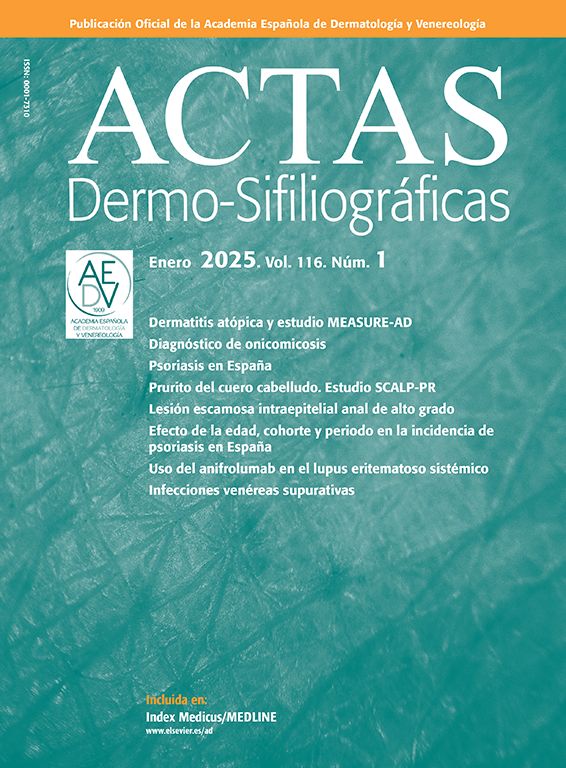A 58-year-old woman was referred with a 20-month history of multiple ulcers on the right side of her face and scalp associated with dysesthesias, along with itching that led to compulsive scratching. Two years earlier, she had experienced an ischemic stroke in the territory of the right posterior inferior cerebellar artery. The examination revealed an extensive crescent-shaped ulcer, with involvement of the right cheek, inner corner of the right eye, and right medial frontal area associated with partial destruction of the right nasal wing and superficial erosions on the right upper and lower lips (Fig. 1a). Notable was a marked inflammation of the right upper eyelid, preventing eye opening, and a 7cm×5cm ulcer in the right frontoparietal region of the scalp with secondary alopecia (Fig. 1b). Neurological examination revealed the presence of anesthesia in the right trigeminal nerve region. Ophthalmological examination revealed ptosis, enophthalmos, and miosis. The skin biopsy was nonspecific, and magnetic resonance imaging showed reactive changes in the soft tissues of the right upper eyelid. A diagnosis of trigeminal trophic syndrome (TTS) was achieved, with Claude–Bernard–Horner syndrome due to ischemic stroke. The patient was treated with occlusive dressings and oral carbamazepine, with significant lesion improvement.
TTS is a rare but important cause of unilateral facial and scalp ulceration due to central or peripheral damage to the trigeminal nerve caused by iatrogenic factors, strokes, tumors, or infections, leading to paresthesias and repeated scratching and self-mutilation of the affected areas. Early diagnosis is important to establish appropriate treatment regimens to prevent any further complications and improve prognosis.
FundingNone declared.







